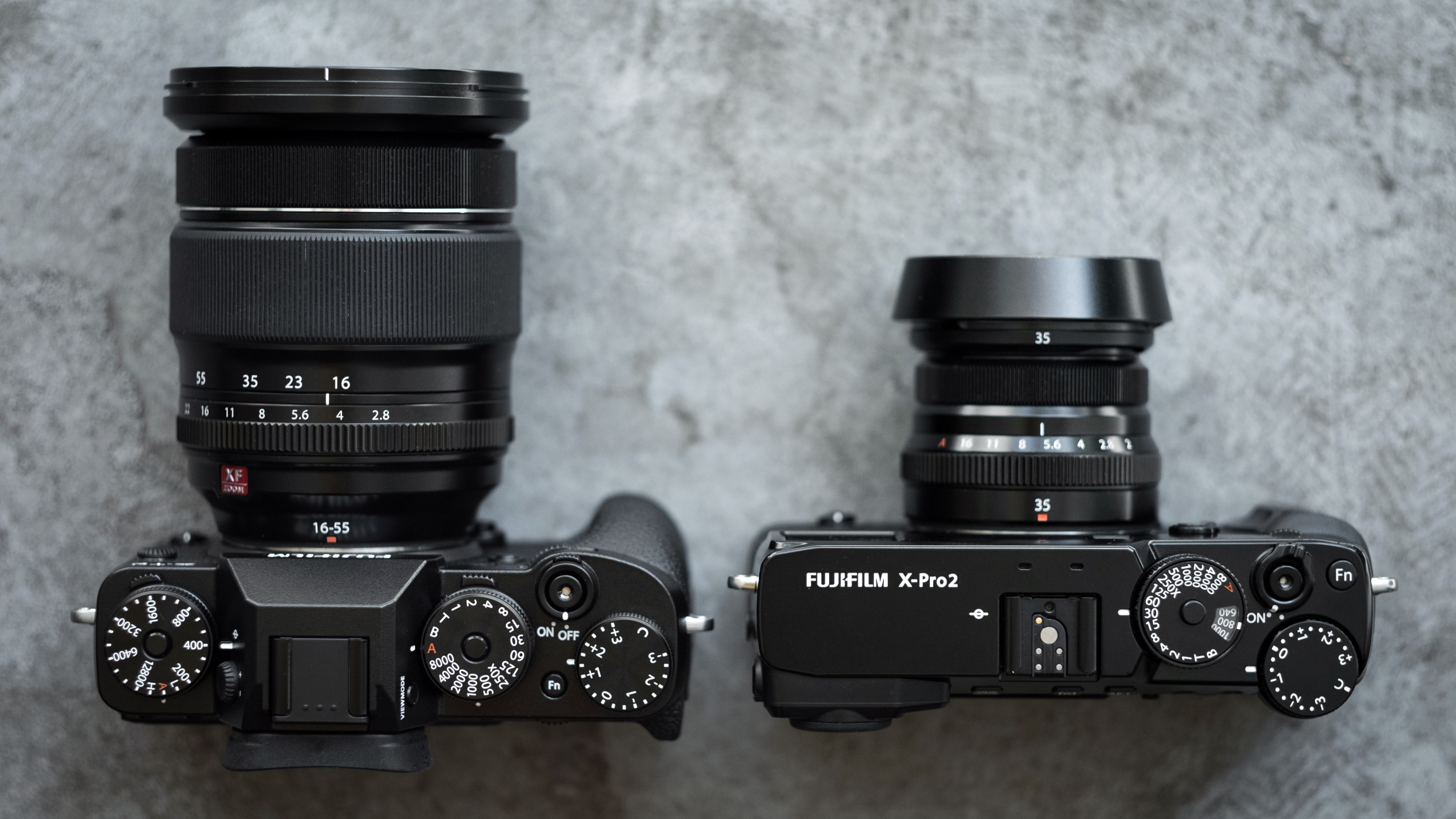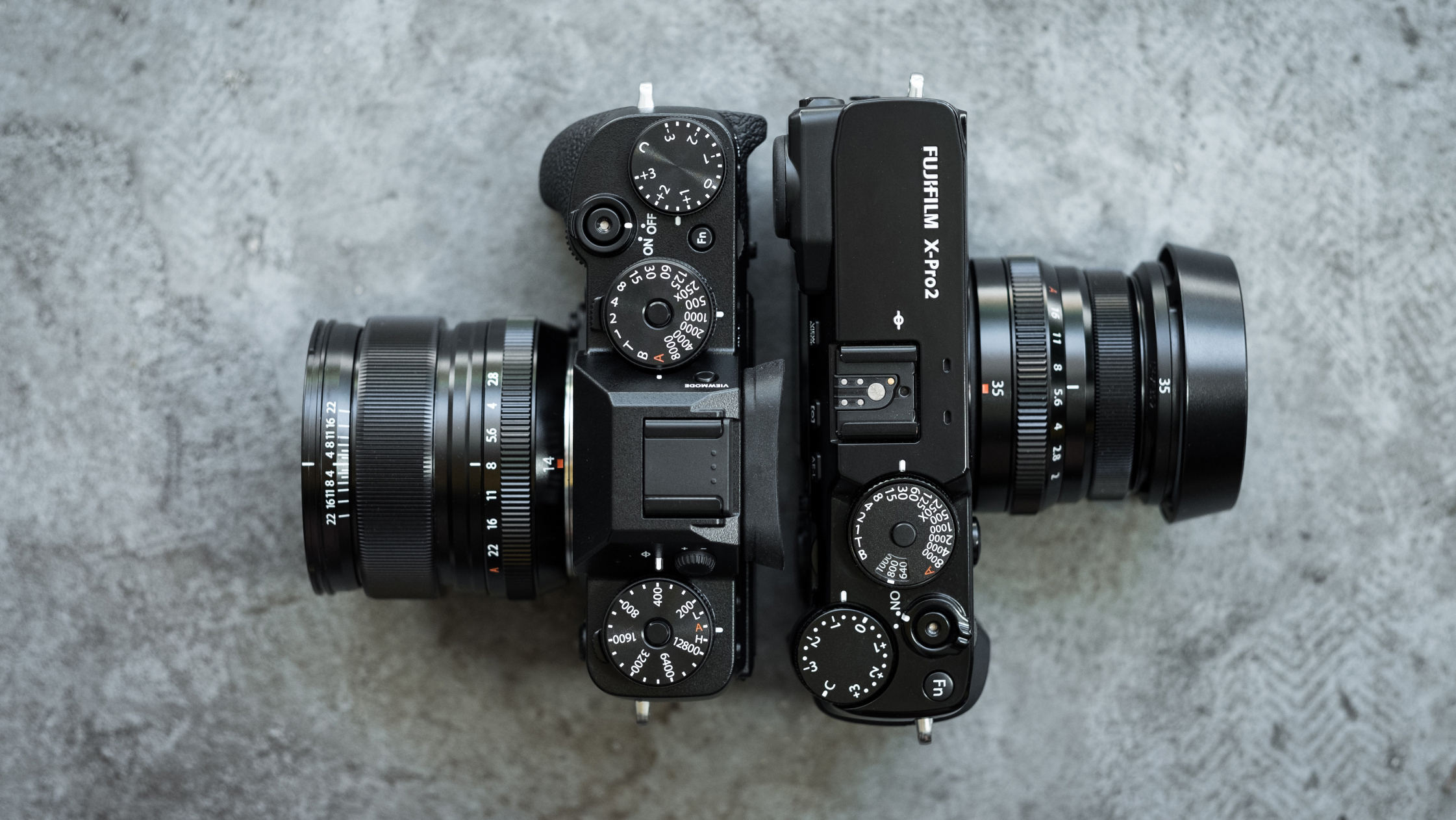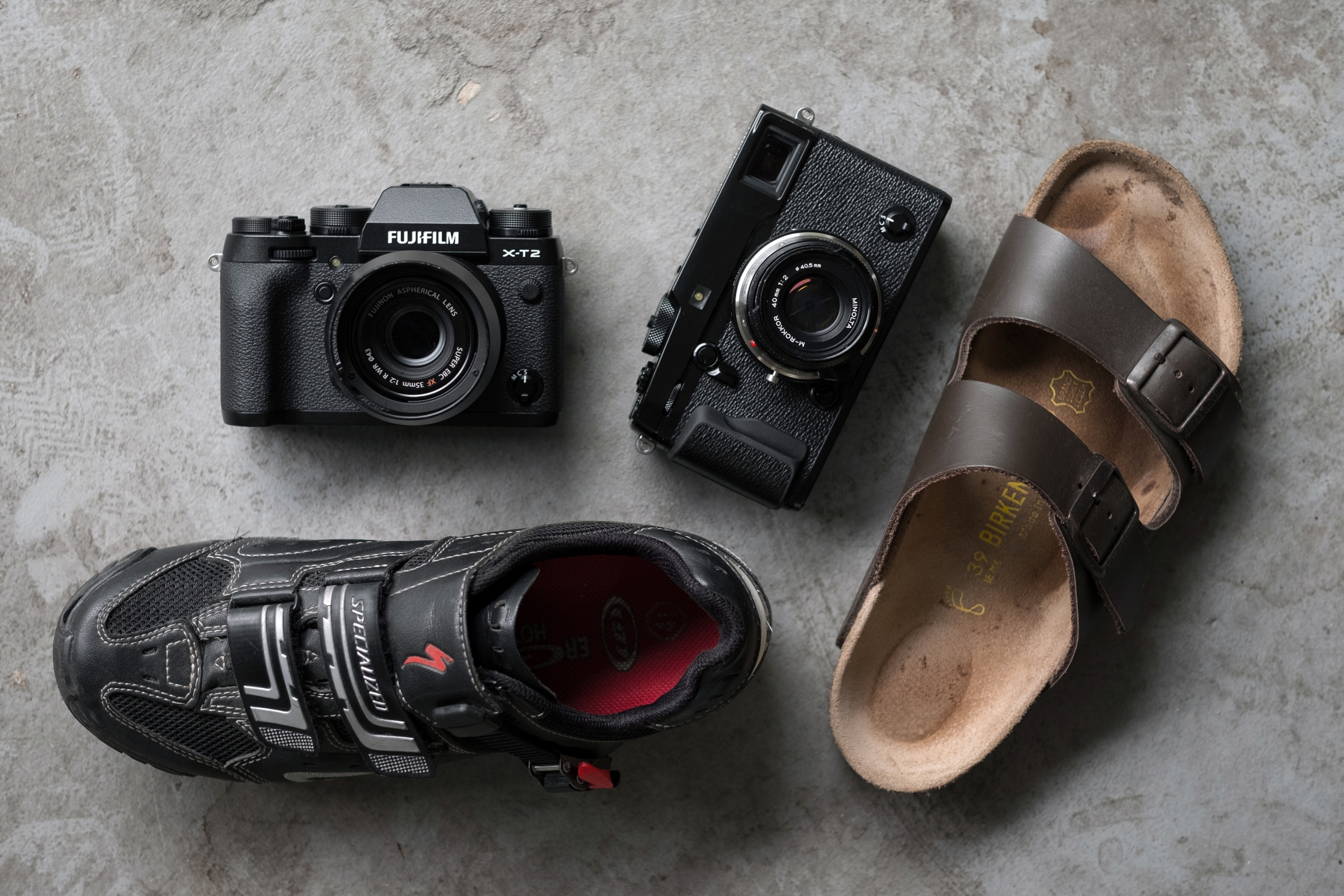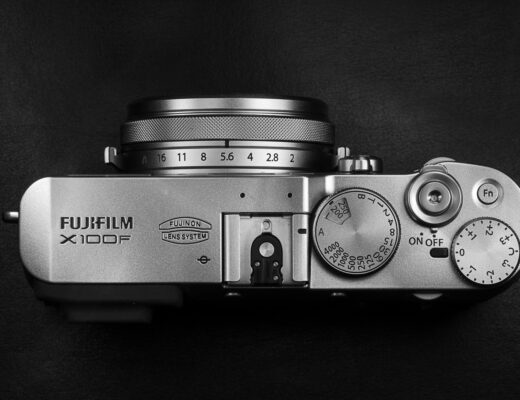Fujifilm’s two flagship cameras have finally arrived, and almost at the same time. Same generation sensor, same generation processor and firmware. We can finally compare apples to apples, oranges to oranges… or can we? The X-Pro series has always been the official flagship body; but the original X-Pro1 couldn’t keep up with the 2 years newer X-T1, the unofficial top-of-the-line body for Fujifilm. The X-T1 had the latest sensor, processor, firmware, superior EVF, AF and was weather resistant…it had everything! The only thing the X-Pro1 had over the X-T1 was the hybrid viewfinder, higher resolution LCD screen and the ‘pro’ designation. Yes the X-Pro1 had the name, but the X-T1 was the top choice when it came to working pros (as well as the X100T). Fast forward to 2016. Fujifilm has a fully matured eco-system. There are basically two body types: the rangefinder-style and the DSLR-style. I say ‘style’ because neither category of body types are technically rangefinders or DSLRs, but they do conform to the ergonomic and functional purpose of these camera types. Which ‘type’ is better, the DSLR or the rangefinder? Which is better, the latest X-T2 or the X-Pro2? Apples to apples, or is it still apples to oranges?
Let’s go over the things they both have in common. Like the previous generation X series bodies, (X-T1, X-T10, X-E2s, X100T, etc.), the X-T2 and X-Pro2 share the latest generation sensor and processor. However, this doesn’t mean the processor or firmware can’t be tweaked. Although the final image will look exactly the same, how the photographer gets to the final image is what the major differences will be between these two cameras. My copy of the X-T2 is pre-production and the firmware was not finalized, but it’s very clear that this body will outperform the X-Pro2 on many levels.
The first area the X-T2 will destroy the X-Pro2 is video. The new X-T2 has a dedicated video mode via the DRIVE dial, now capable of using the shutter button to start and stop the recording. No more silly red button. Thank-you Fujifilm! The X-T2 also has 4K video output in 30, 25 and 24 FPS. The X-Pro2 is 4K capable, but Fujifilm decided to disable the feature for now due to overheating issues. The X-T2 also has a dedicated 1/8” or 3.5mm microphone input, as well as 4K video output via HDMI. Yes, Fujifilm has finally decided to get serious about video production. However, to truly succeed in video, Fujifilm needs video-centric lenses (either a wide zoom or wide primes with improved OIS), better AF tracking, video LOG format, and a dedicated headphone input. For many X-Pro2 shooters, video isn’t important. That’s true. I would say that most Fujifilm photographers don’t really care about video, and it shows with how much effort Fujifilm has put into their video capabilities in the past. But things will change with this new camera.
Another area that the X-T2 excels is autofocus. Not only have they increased the amount of user selectable focus points (325 versus 273), but the focus area is noticeably wider on the X-T2. There is a dedicated AF-C Custom Settings section that allows 5 different ways the X-T2 will continuously track your subject (multi-purpose, ignore obstacles, accelerating/decelerating, sudden appearance, erratic movement) and a custom AF-C setting. In practical use, I did find the X-T2 did lock onto focus slightly faster than the X-Pro 2, but the biggest bottleneck in AF with Fujifilm are the lenses. The latest zooms and primes focus very quickly on both the X-T2 and X-Pro2. The XF35mm f/2 is the fastest and most accurate prime lens. However, throw on a first gen lens (XF35mm f/1.4) and AF is slow and hunts around. If you want to see huge AF improvements, you need to upgrade both your lenses and your bodies. The combination of the X-T2 and the XF35mm f/2 will get you very close to DSLR level AF speeds and accuracy. Continuous shooting at 14FPS is also DSLR level speed, although this is limited to shooting with the electronic shutter only. Using the standard shutter you get 11FPS, with 73 JPEGs or 30 lossless compression RAW files. That’s still pretty darn fast.
There are other small but significant improvements on the X-T2 over the X-Pro 2. Both SD card slots on the X-T2 is UHS-II versus the X-Pro 2’s single UHS-II and second UHS-I type slots. The dedicated ISO and shutter speed dial are both lockable, the dials are tighter, the buttons are more ‘clicky’ and the shutter button has a nicer angle and feel. Even the positioning of the buttons make more sense on the X-T2, although I would still swap the position of the AF-L and AE-L buttons (this is possible in the custom button menu setting like the X-Pro 2). The position of the AF-L and Q button on the X-Pro 2 makes no sense, and the AE-L and metering button is too far over to the left. The X-T2 is ergonomically more sensible and comfortable.
The biggest difference between these two cameras for me is how the photographer views the image, either via LCD or viewfinder. The X-T2 is the clear winner when it comes to the LCD since it’s a 3 way articulating screen. If you are tall or want to shoot down low, or if you want to keep your lines straight and shoot up high, you need the articulating screen. When it comes to using the viewfinder, this is where the hybrid viewfinder on the X-Pro2 will have an advantage over the X-T2. Although the X-T2’s EVF has a higher magnification and refresh rate (0.77x at 100 fps versus 0.59x at 85 fps), the X-Pro 2 has the ability to shoot in optical viewfinder mode with a mini EVF window. The advantage? There are many. With medium focal length lenses, you can see your subjects entering and leaving your frame. In low light, you won’t get the lag you get on EVFs. When shooting continuous mode, you won’t get screen blank-out, thus being able to follow your subject without losing them, as well as being able to see the exact moment of exposure.
There are more differences between these two cameras, but I’ve touched on the big ones. How important is video to you? Focus tracking? Top continuous shooting? Articulating screen? Hybrid viewfinder? Are you still undecided? If so, the title of my article breaks it down pretty clearly in my small mind. I’ve been shooting for over 25 years and I’ve shot with and tested many camera systems. I’ve listened to countless debates by my fellow camera nerds over the advantages of one type of camera system over another. Looking at both the X-T2 and X-Pro2, I can tell you that Fujifilm is targeting two different types of photographers. The X-T2 is a track-ready sports car. It’s fast, its efficient, it’s powerful, it’s functional. The XT-2 is for sports, wedding, wildlife photographers, and Fujfilm is targeting current Canon and Nikon DSLR shooters. The huge upgrade in video capability makes it very clear that Fujifilm is targeting the top end of the cropped sensor DSLRs.
The X-Pro 2 is a convertible sports car. It can race, but it’s also about style. The X-Pro2 is a very capable camera. It can keep up with the X-T2 in most situations, but style and form factor is a big selling point. Is style important? Of course. Do you wear track pants to a wedding because its more comfortable? The look and feel of a tool in the hands of a craftsman or artist is very important. Are you a Leica photographer who’s decided to stop paying the value of your car in lenses and are looking for a film-like digital camera? Are you a hipster film photographer who’s tired of developing your own black and white film in your bathroom, only to digitally scan your negatives and covert them into JPEGs anyway and share your ‘analog’ images on Instagram? Do you want your camera to stand out of the crowd in a sea of generic camera shapes made by Sony, Canon, Nikon, Panasonic, etc.? Get the X-Pro 2. Complete strangers will come up to you and ask if you enjoy shooting film. If you don’t care about video and don’t need an articulating LCD, the X-Pro 2 is great.
Which would I choose? If I wasn’t also a YouTuber, I would clearly choose the X-Pro2. I love the understated style (no Fujifilm logo on the front face), the ergonomics (right hand control) and the hybrid viewfinder. However, I can not ignore the video capability of the X-T2. I love the hybrid viewfinder of the X-Pro2, but I’ll just wait for the X100T replacement. Although my heart says X-Pro2, my mind tells me the X-T2 is the future for the Fujifilm performance driven photographer. It’s a sportster. Hipsters beware.
























